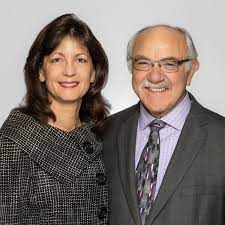
In his 2017 Chief Learning Officer article, “The Business Case for Leadership Development,” William C. Byham, founder and CEO of Development Dimensions International, notes the following: “An article in McKinsey Quarterly accused U.S. companies of lavishing $14 billion per year on programs to nurture their leaders while seeing little in return.” The Wall Street Journal ran an article a few years ago titled “So Much Training, So Little to Show for It.” And the authors of an October 2016 article in Harvard Business Review referred to leadership development programs as the “great training robbery.”
Some estimates put the annual investment in leadership development in the U.S. at $50 billion. When the cost of travel and the time of leaders involved increases, that amount increases to more than $100 billion. Globally, the amount is more than $500 billion.
The considerable need for leadership development but low expectation of a documented return on it presents a quandary for CLOs who understand how critical it is to develop their organizations’ leaders.
In the past, the providers of leadership development have been reluctant to step up to the challenge of connecting leadership development directly to the business. But that seems to be changing.
Several authors of best-selling leadership books, for example, are beginning with the end in mind. Liz Wiseman’s “Multipliers: How the Best Leaders Make Everyone Smarter” is being used worldwide to drive business results. Wiseman Group’s global partners are trained and certified to offer courses in the Multipliers methodology, which connects programs to the business and helps calculate the financial ROI of those programs.
Angie Morgan, Courtney Lynch and Sean Lynch, authors of “Spark: How to Lead Yourself and Others to Greater Success,” have made a similar commitment. Through their leadership development company, Lead Star, they are connecting leadership development to the business. This organization’s approach is based on the Marine Corps’ leadership model, and their book is endorsed by Frederick W. Smith, chairman and CEO of FedEx Corp.
In another example, Eric Kaufmann, author of “The Four Virtues of a Leader,” takes a holistic approach to business connection. In his book, Kaufmann brings leadership development into the company by meeting with top executives and identifying the key business measures that may need to improve with leadership development and coaching. Having business discussions with top executives represents a major shift; some executives are not interested in connecting leadership development to the business directly while others are requiring the connection for the program to be implemented.
Even in large organizations, leadership providers are stepping up to this challenge. Last year, for example, The Ken Blanchard Cos. produced a webcast, “Making the Business Case for Leadership Training,” detailing how leadership training should drive business value. In the webcast, David Witt suggested it’s time to connect leadership development to impact and ROI measures.
This was followed by Byham’s CLO article, “The Business Case for Leadership Development,” which showed how leadership development connects to major organizational measures. According to the “Global Leadership Forecast 2014-15,” conducted by The Conference Board and DDI, 81 percent of people who report to a trained leader said they were more engaged in their jobs. Even more important is how the change in leader behavior in 43 companies affected important business metrics. A further 22 companies calculated ROI for their training programs and found ROI figures ranged from 147 percent to 633 percent.
In some organizations, programs have been redesigned so the leaders involved can clearly see how those programs connect to ROI. For example, the Employers Council, a Denver-based nonprofit specializing in supporting organizations with HR law, HR services and training, offers an Intentional Leader program. They have dedicated a module where participants connect their leadership development to key performance measures. The program is built around a project that participants complete to show impact and ROI.
This underscores that something as soft as leadership development has a business connection — good news for top executives.














